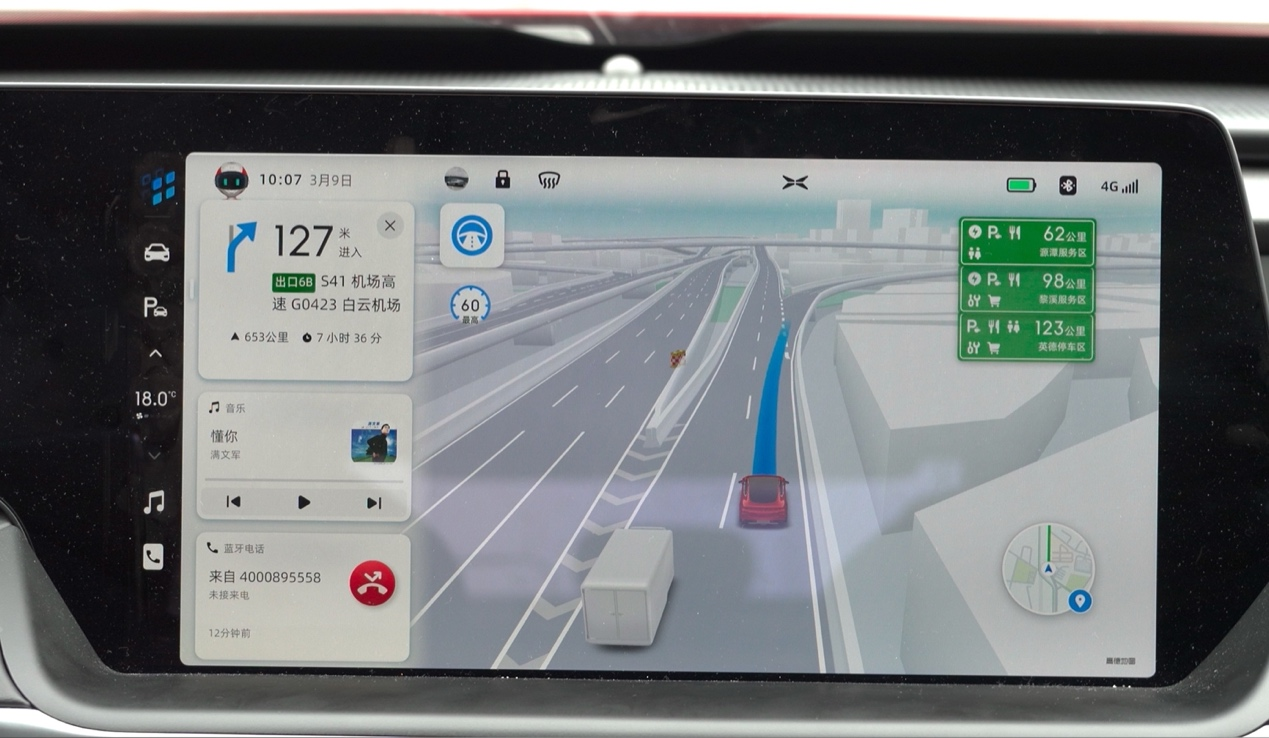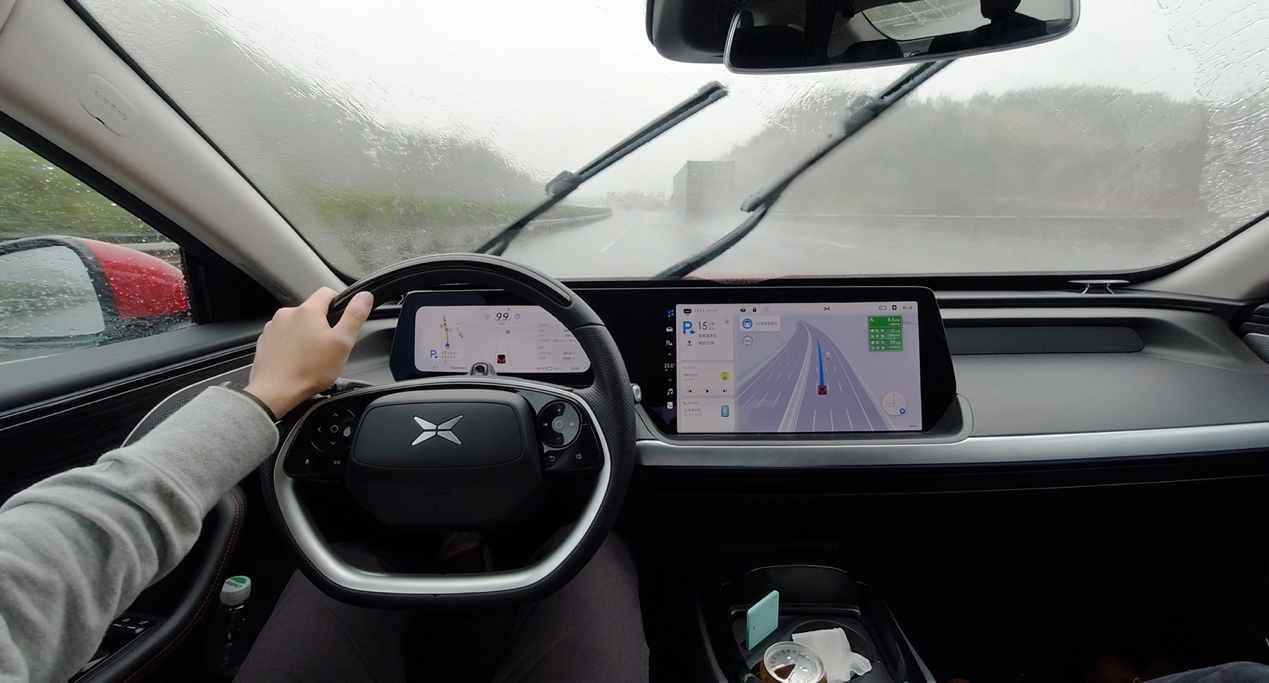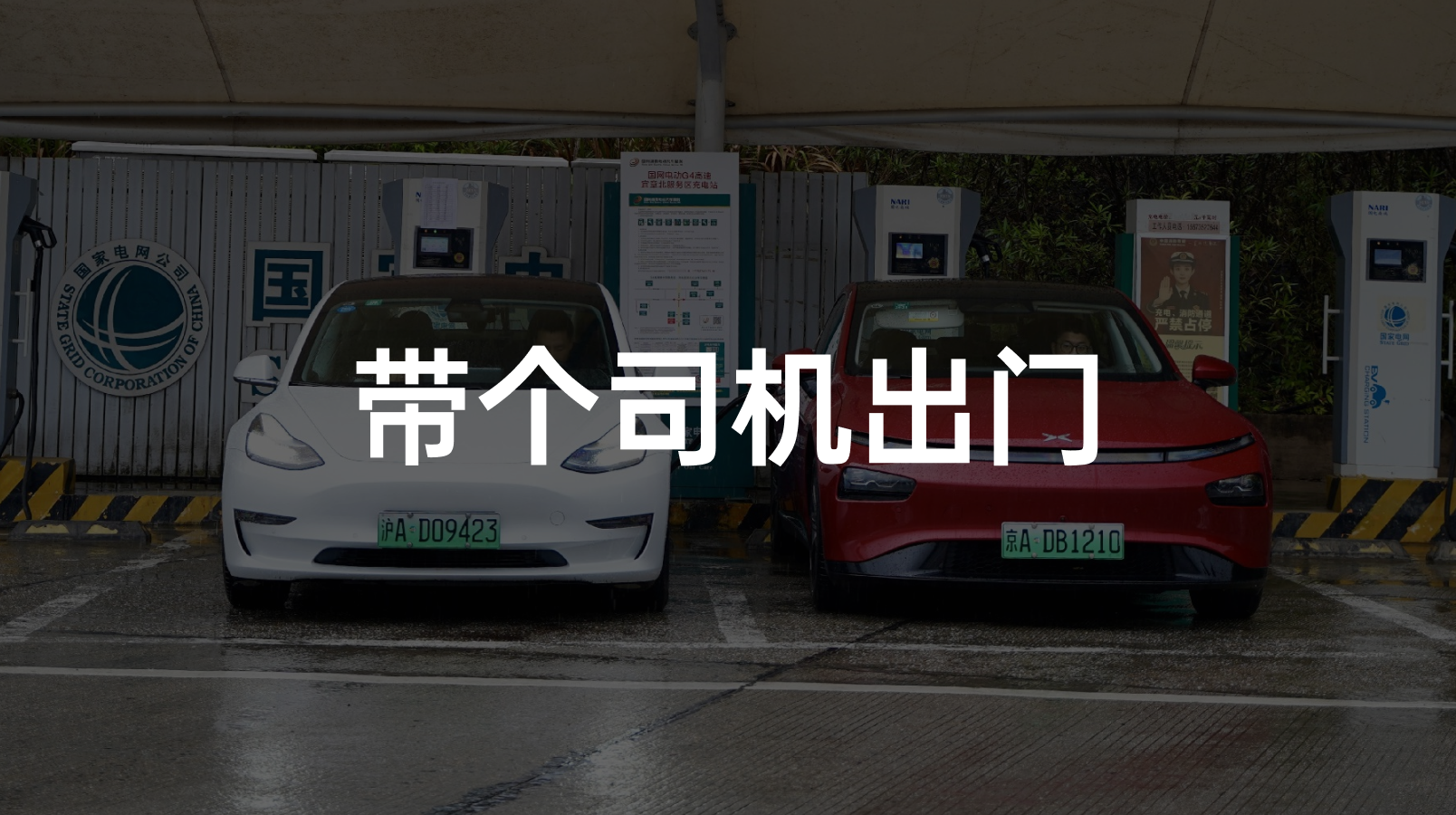“Really want to change cars!”
“I feel like taking a driver with me.”
This was the thing we talked about the most during our road trip from Guangzhou to Beijing in March, driving XPeng P7 and Tesla Model 3 with me, the camera guy Lao Zhou, and Long Xue.
In March this year, we went on another super long journey across China. Our main purpose was to experience the navigation-assisted driving functions of XPeng P7 and Tesla Model 3.
As an “old driver” of assisted driving, the four-day trip was actually uneventful. All the attention was focused on the differences between NGP and NoA, but these were the key differences, so I spent most of the second half of the trip entertaining myself. However, what surprised me was that the biggest change after the trip was with my camera guy Lao Zhou and Long Xue.
“I have to stop at the service area every 150 km” and “I feel like taking a driver with me”
Lao Zhou is our company’s cameraman. He commutes by subway every day, and only chooses to drive when traveling with his children. Firstly, it’s inconvenient to use his out-of-town license plate in Shanghai, secondly, driving to and from work is more tiring than taking the subway. Therefore, he has only driven his car for nearly three years and traveled just over 10,000 kilometers in total.
For Lao Zhou, buying a car is for driving his children out to play on weekends or to visit his family in Hubei during the holidays. The travel mileage for self-driving tours on weekends is within 300 km, and the mileage to visit his family during holidays is about 700 km.
Basically, when going out to play, Lao Zhou drives alone. So, he stops at the service area after driving about 150 km. A 700 km high-speed drive a day is not only the limit for his family, but also the limit for Lao Zhou’s physical stamina.
After filming and comparing the XPeng NGP and Tesla NoA, Lao Zhou realized that his current car can automatically stay in the middle of the lane without worrying about the accelerator or brakes, making long-distance driving so easy.
Based on our actual test records, from Guangzhou to Beijing, a 2,000 km high-speed ride, excluding manual interventions when entering and exiting toll stations and service areas, NGP intervened only 19 times, and NoA intervened 22 times.
After returning to Shanghai, I asked Lao Zhou again, if you were to drive with an assisted driving car on a high-speed ride, how often do you think you need to stop at the service area?
“Based on my previous experience, I could go up to 300 km. Because I don’t have to concentrate all the time, I can relax a lot,” Lao Zhou replied.
Therefore, based on Lao Zhou’s driving habits, with the assistance of assisted driving, the maximum single travel mileage has doubled from 150 km to 300 km.
Not only does this greatly reduce the number of visits to the service area, saving a lot of time, it also reduces the fatigue of the driver, and is also safer in a sense.After this trip, Lao Zhou deeply desired to have a car equipped with assisted driving to drive long distances a few times a year. He is a translator in the automotive industry and responsible for English translations, spelling corrections, and wording modifications. Long Xue is responsible for the production of our short videos on Douyin. Although she has been in the automotive media industry for 2-3 years, most of her previous experience was with traditional fuel cars and she had no experience driving long distances.
After this long-distance trip, Long Xue’s evaluation of assisted driving with navigation was: “It feels like having a driver when going out.” Although Long Xue still does not actively drive long distances, she strongly hopes to have this “driver” to help alleviate some of the driving fatigue when necessary.
Tesla’s AP is steady, but NoA is not as smart as XPeng’s NGP
According to the data from this ultra-long-distance trip, XPeng NGP is leading Tesla’s NoA in all aspects of the data. Although the lead is not significant, in the eyes of Lao Zhou and Long Xue, NGP’s actual feedback in multiple dimensions is much better than NoA, mainly reflected in three aspects: “safety,” “peace of mind,” and “intelligence.”
Let’s talk about safety first
As a passenger on this trip, Long Xue experienced both XPeng NGP and Tesla’s NoA in 4 days. In Long Xue’s opinion, NGP is more like a mature and stable driver, while NoA is more like a young driver who just got their license. NGP’s safety compared to NoA mainly comes from three points.
Excellent visualization
As the pioneer of assisted driving, Tesla was the first to visually display surrounding lane lines and traffic participants in a way that simulates the world around the car on the car screen, allowing drivers to see the world around the car more intuitively.

When drivers become more familiar with the world and the car’s intentions, they will naturally trust the vehicle and give more driving control to it.
XPeng, on the other hand, displays the surrounding environment of the vehicle, including the number of lanes, the undulating nature of the overpass, the branching of the overpass and rivers, and even information about oncoming lanes, in real-time on the car screen, in addition to identifying surrounding lane lines and vehicles.

The most important function of assisted driving with navigation is to automatically change the highway based on the navigation route. So, after the direction the vehicle will travel is displayed on the car screen, the driver can more clearly compare the car’s intentions with their own and decide whether to take control.
This is where Long Xue’s sense of safety comes from.
More gentle movementsThe basic “assisted driving” only involves lane keeping ability and acceleration/braking control, with not such high requirements for vehicle control. However, “navigation-assisted driving” requires active lane changing, overtaking, and entering and exiting ramps to switch onto highways.
In terms of changing lanes, Tesla’s movements are more pronounced than those of XPeng Motors, with the advantage of smoother lane changes, but the disadvantage of more forceful perception for the passengers.
The NGP and NoA experiences are further enhanced when entering and exiting ramps.
When entering a ramp, usually one lane turns into two, in which case both Tesla and XPeng Motors, relying solely on visual perception, tend to get a bit jumbled. For unfamiliar drivers, the first reaction would be losing control.
On the other hand, the XPeng NGP with the “Advanced Driving Assistance Map” can predict lane information ahead of time and choose the route beforehand, making the entire ramp process smoother and more like an experienced driver.

In terms of acceleration/braking control, Tesla is also not as good as XPeng Motors. The NoA will still occasionally fail to slow down or suddenly decrease speed when entering a ramp, when the vehicle speed control does not match the driver’s and the passenger’s expectations. This can cause a lack of feeling of safety for the driver or passengers.
This is also the scenario that Tesla urgently needs to improve.
Where does peace of mind come from?
During our 2200 km long journey, there were many challenging scenarios, such as mountain roads, tunnels, and heavy rain. To be able to work stably in these scenarios is also where Long Xia’s sense of security comes from.
On winding mountain highways, the NoA performance of both Tesla and XPeng NGP is very stable. However, as we traveled through Hunan, where tunnels were frequently encountered, NoA frequently degraded. Based on the data we recorded, the NGP tunnel pass rate reached 85% (27 out of 23), while the NoA tunnel pass rate was only 11.1% (3 of 27).
However, it is important to note that in tunnel scenarios, NoA only downgrades to normal AP, and lane keeping can still work normally. However, it loses its ability for active lane changing, which means that Tesla needs to be taken over manually in some tunnels where diverging lanes may appear.
In heavy rain weather, rainwater, water mist from the front car, and water accumulation on the road can greatly affect the auxiliary driving camera recognition. Therefore, in the first day of our journey, NoA frequently exited due to limited vision caused by heavy rain.
 # Translation
# Translation
The reason why XPeng is able to work relatively stable is not that its visual perception ability is much stronger than Tesla’s. It is because XPeng has added advanced driving assistance maps and high-precision positioning on the basis of camera perception, relying on known maps and positioning accurate to the lane line. Even in heavy rain, NGP can work calmly.

Let’s talk about intelligence again
Compared with the assisted driving, assisted driving by navigation has the additional function of active lane changing and overtaking. To have this function is not difficult, as long as you have the ability to turn on the indicator and change lanes. However, to provide a good user experience requires very strong strategies.
In XPeng’s NGP, there are two different strategies for lane changing on two-lane and three-lane highways, respectively.
On two-lane highways, the lane division is relatively clear. The left lane is for small cars to drive fast, and the right lane is for large cars to drive slowly. Therefore, NGP will default to the left lane even if it encounters slow cars. It will not actively change lanes to overtake, because it knows that there are more large cars on the right, and the success rate of overtaking is not high. It may even be pressed to the slow lane on the right.
On three-lane highways, NGP’s lane-changing strategy has undergone a drastic change, from conservative to aggressive mode. Even if the speed difference between the front vehicle and our target speed is not large, NGP will still actively change lanes to overtake and ensure that its speed is infinitely close to the target speed in order to improve the passing efficiency under NGP.
In the second half of the journey, Lao Zhou often shouted the lane changing instruction first in the car to see how big the difference is between NGP and his own driving habits. Every time he hits the target accurately, there is a proud smile on Lao Zhou’s face.
The lane-changing logic of the Model 3 next door seems to be somewhat simple. In the case of encountering a slow car and a large speed difference between the front vehicle and the target speed, it will actively change lanes and wait for the opportunity to overtake the slow car. However, this simple and rude logic also brings two new problems.
First, it changes lanes too frequently on the two-lane highway, the second is that after changing to the right lane, it often does not have time to overtake and is pressed by the speed of the car on the right, not only failing to overtake but also giving up the position on the left lane, making it even less efficient.
A few more words
From the lane-changing logic, XPeng NGP’s strategy is superior to Tesla NoA, but here we must also point out the shortcomings of NGP and the advantages of NoA.
On two-lane roads, NGP’s lane-changing strategy is very “lazy”, although the strategy of “maintaining the status quo” is better than NoA’s “take the slower lane”.During this long journey, we noticed that the NGP (Next Generation Autopilot) can be overly sluggish when encountering slower vehicles on the fast lane, even if the speed difference is over 40km/h, NGP would still not show intent to switch lanes to overtake the slower vehicle.
We hope that XPeng’s autonomous driving team can optimize this to improve the user experience.
In terms of the maximum lane change distance, Tesla outperforms XPeng. In dense traffic, Tesla’s shorter maximum lane change distance allows for more agile lane changes and overtaking. Many times, Tesla has already completed the lane change action, while XPeng needs to wait for more space before completing the lane change, which makes the NGP experience in dense traffic less smooth.
Conclusion
As a driving assist enthusiast, many people will ask me a question: with high-speed trains being so convenient nowadays, most people would choose a train for trips over 300km, and driving for trips under 300km is not a problem, so what’s the point of driving with driving assistance?
Before this trip, I had the same doubts. In terms of travel efficiency, cars do not have much advantage compared to high-speed trains, which are becoming faster day by day.
But we overlook a group of people who “can only” travel by car for various reasons.
For family travel, driving can bring more luggage, more freedom in time planning, and more time to have fun together. For business travel, driving is often more efficient for trips of around 300km. For the logistics industry, road transportation is an essential way of transporting goods.
But for the three groups mentioned above, the driver is sacrificed.
A good driving assist can make their journeys easier and safer.
Looking at the development of China’s railways from the initial 100km/h to 150km/h, to now 300km/h and even 350km/h, it is the result of infrastructure development and railway technology.
This development process will undoubtedly be replicated in China’s road travel. A better highway network will make the average speed of our long-distance travel faster and the distance of travel longer. With the support of stronger vehicle performance and more advanced active safety features, high speed driving is also an expected outcome.
Tesla has been visionary in proposing the concept of assisted driving by navigation, and XPeng has brought a better landing experience in the Chinese market.
We hope that with the support of technology, private car travel can also be gradually improved. We also hope that more people can become more active in trying and accepting intelligent driving. This will bring us closer to the future.
This article is a translation by ChatGPT of a Chinese report from 42HOW. If you have any questions about it, please email bd@42how.com.
